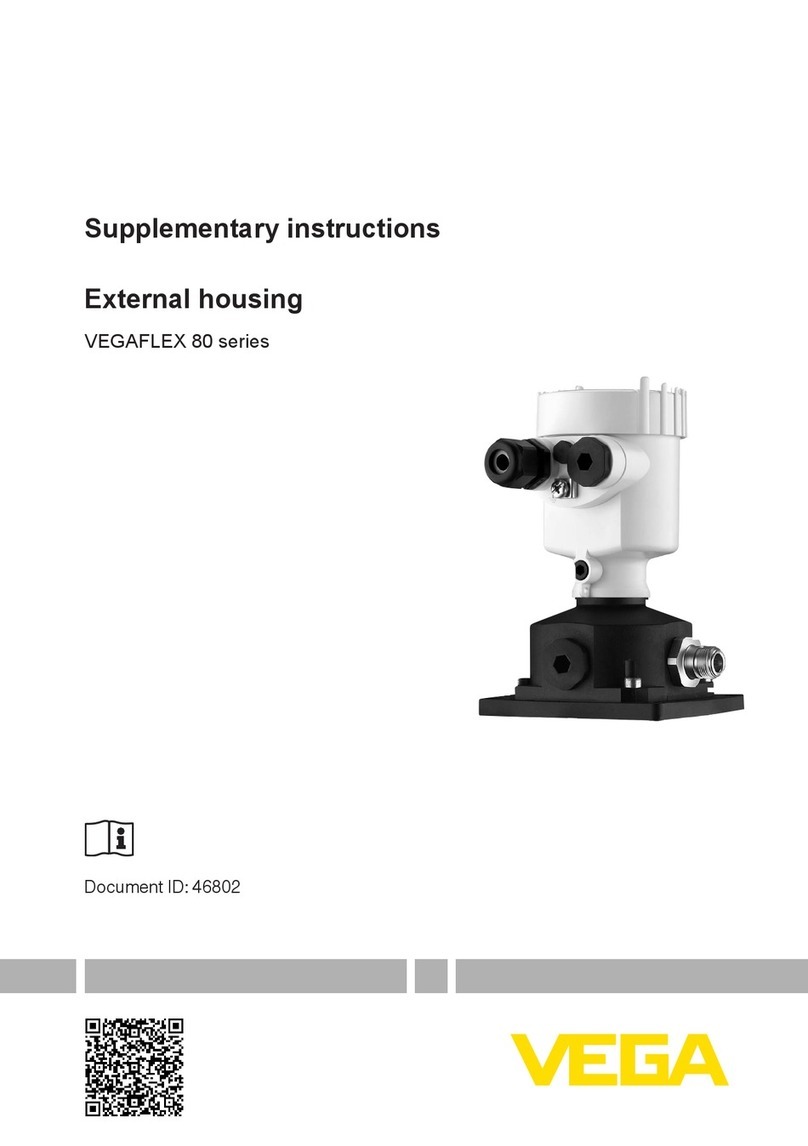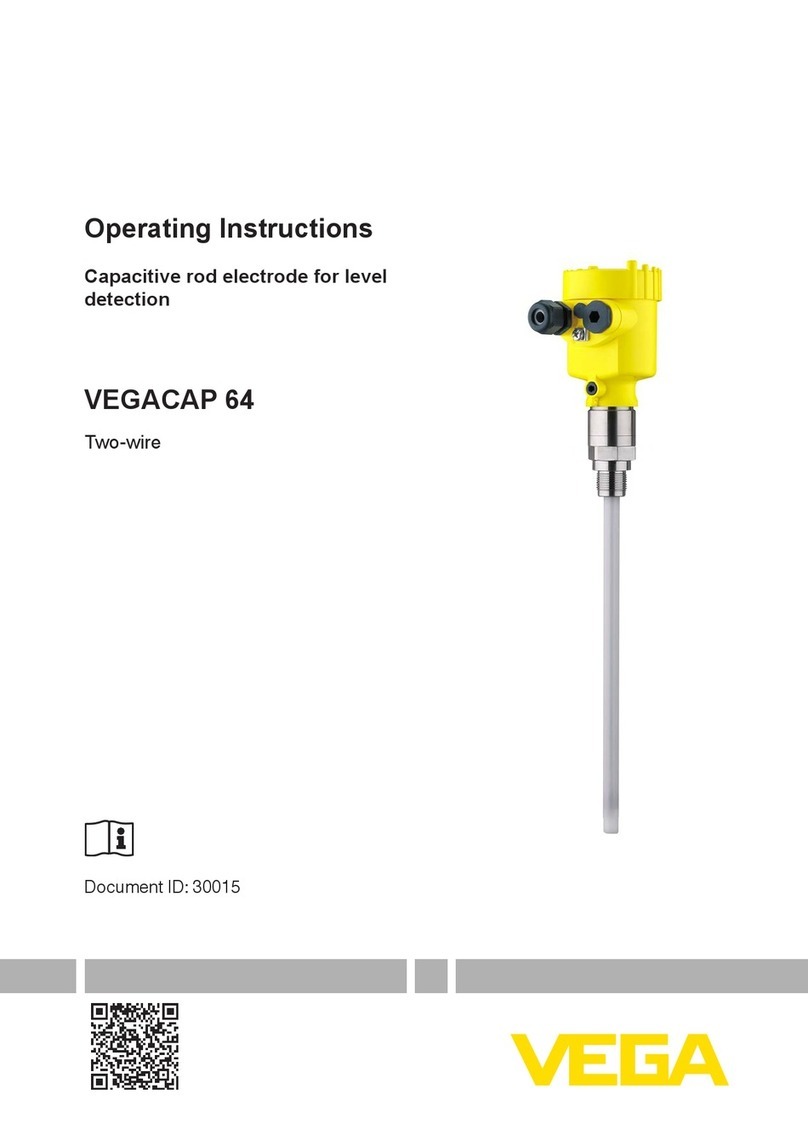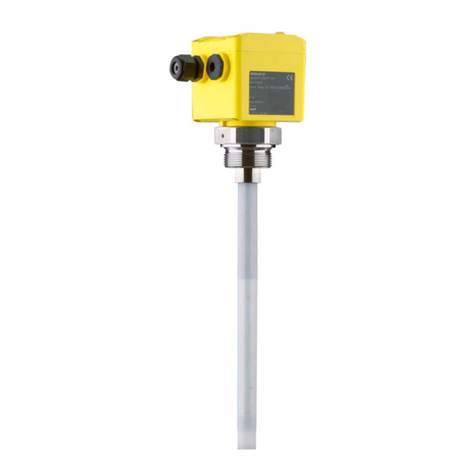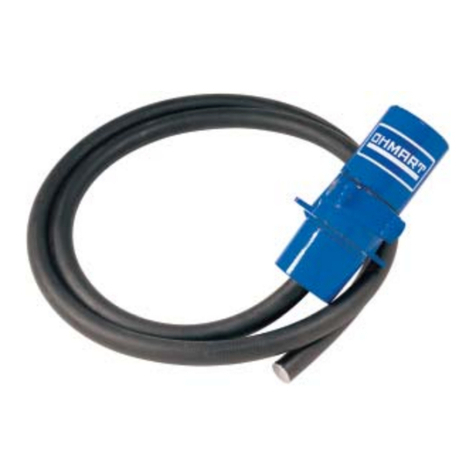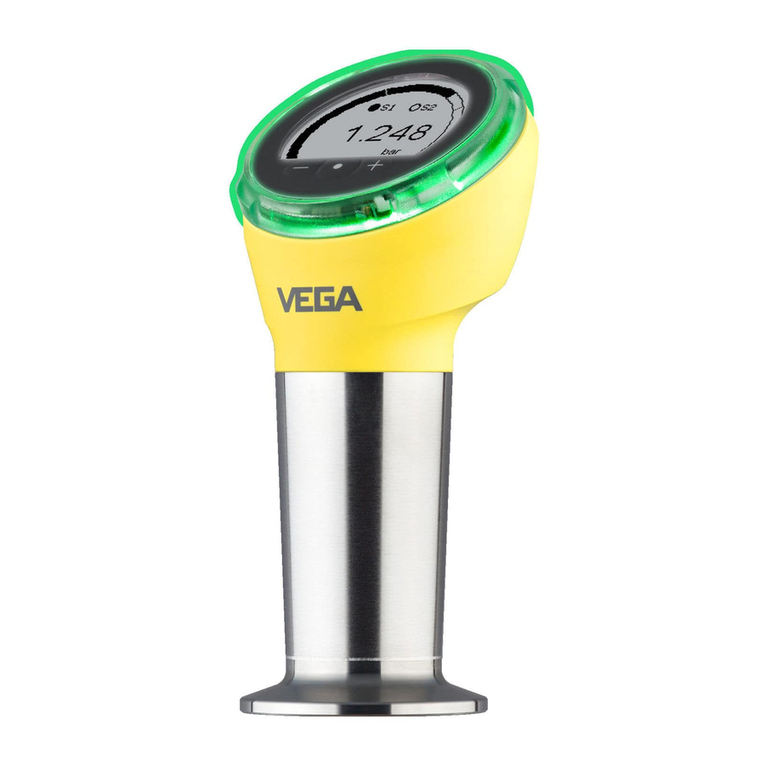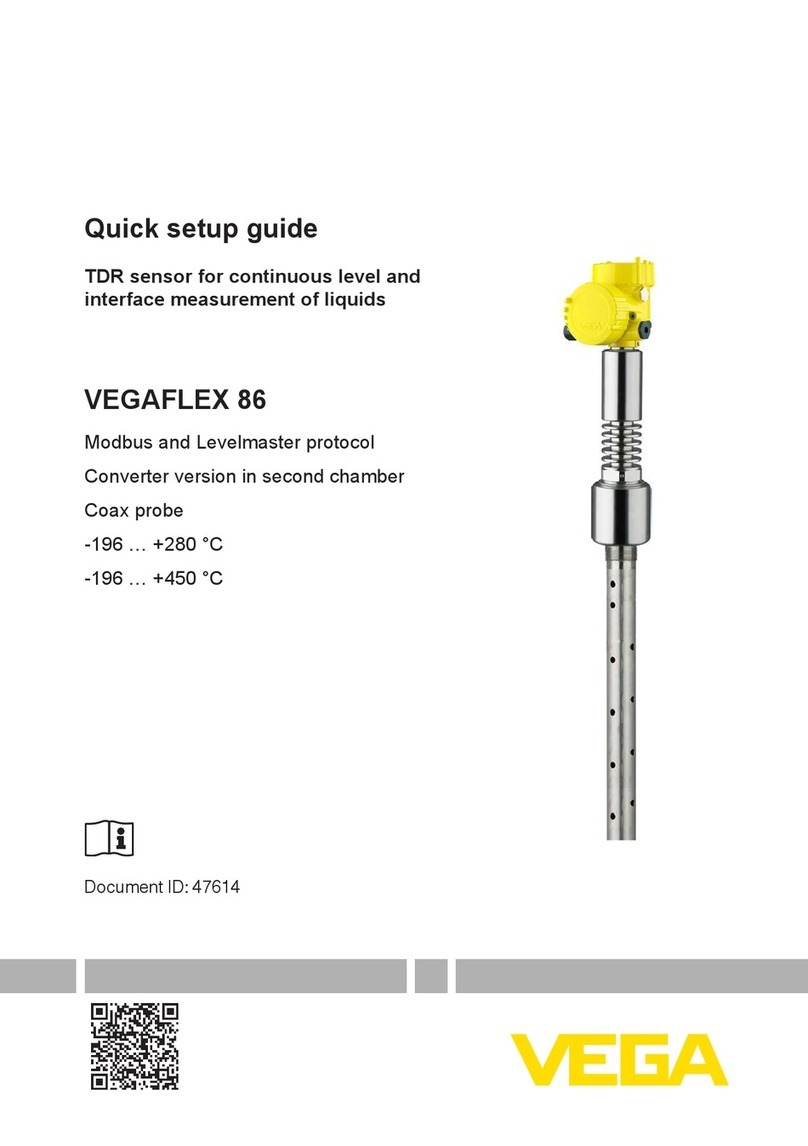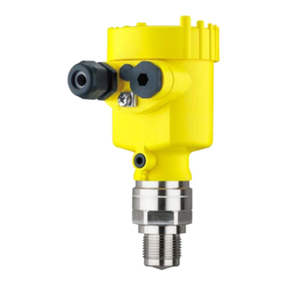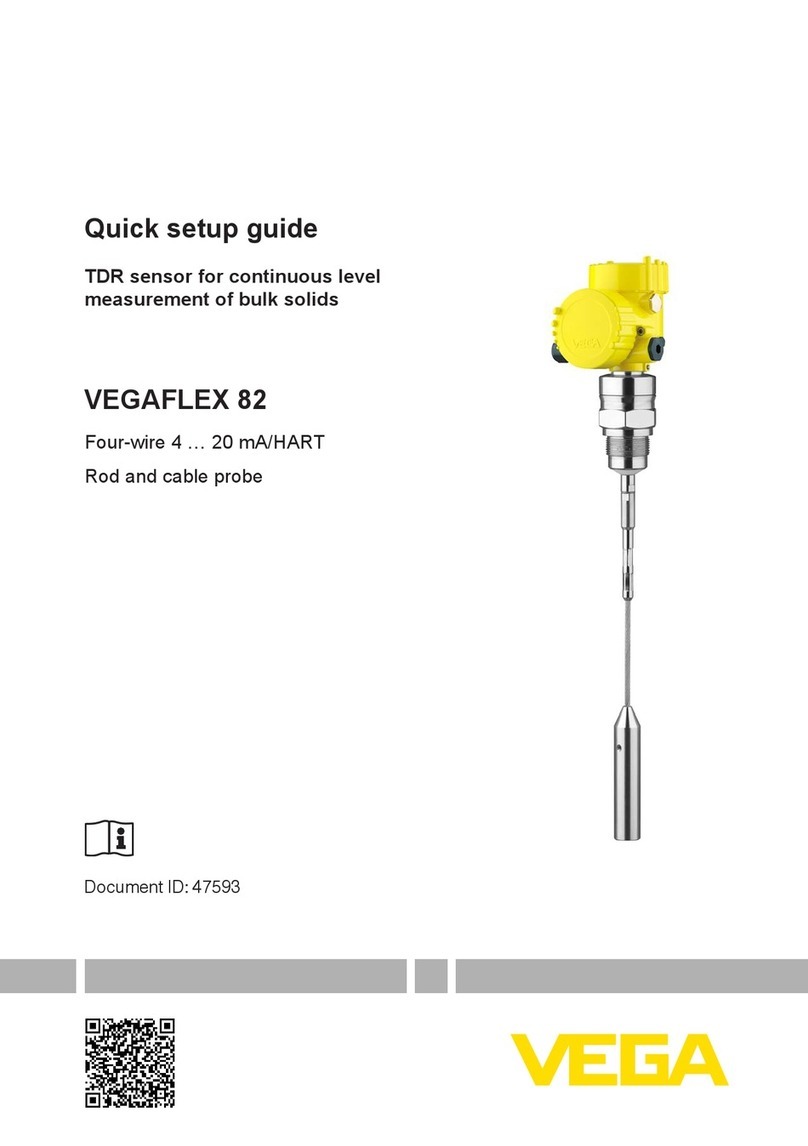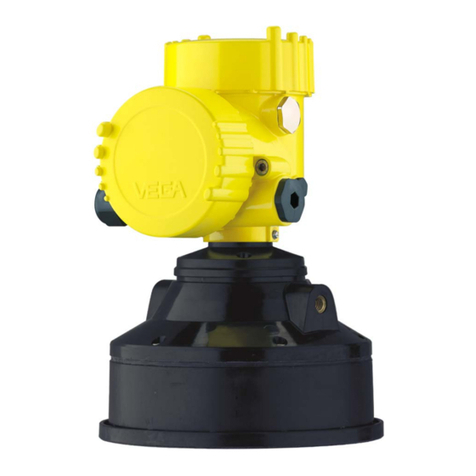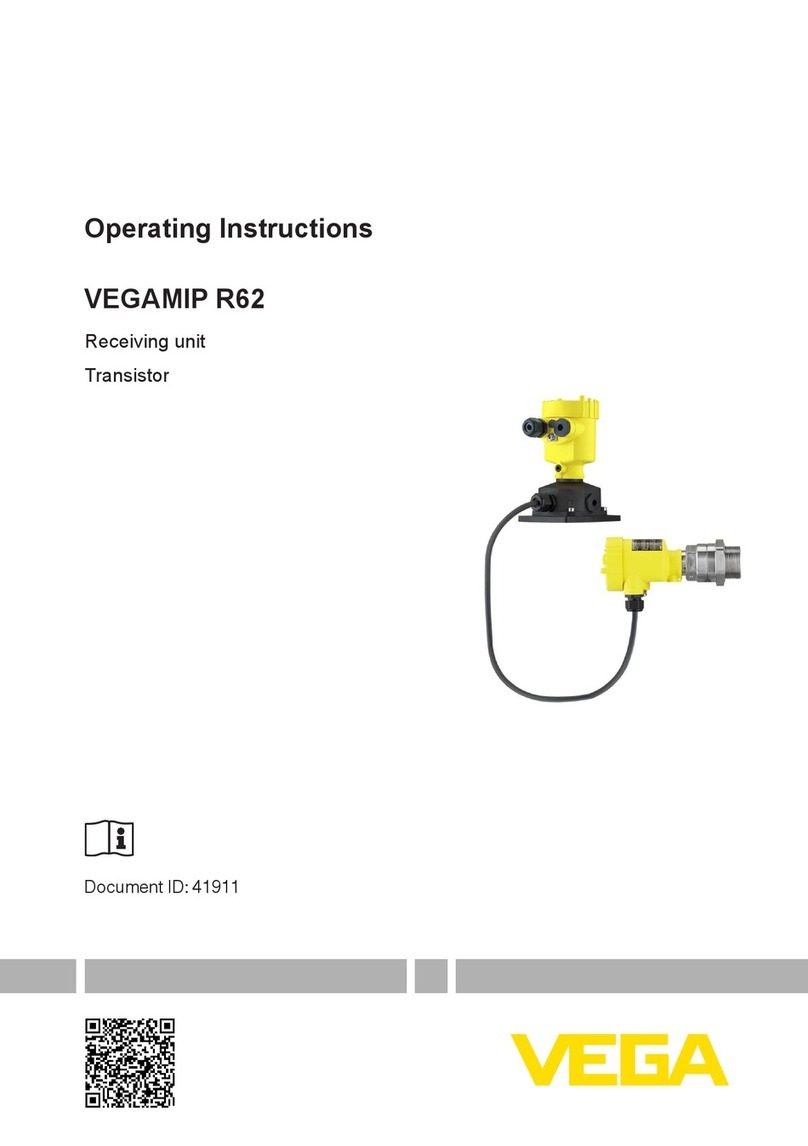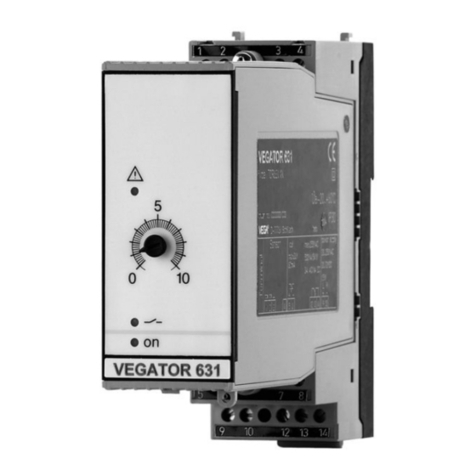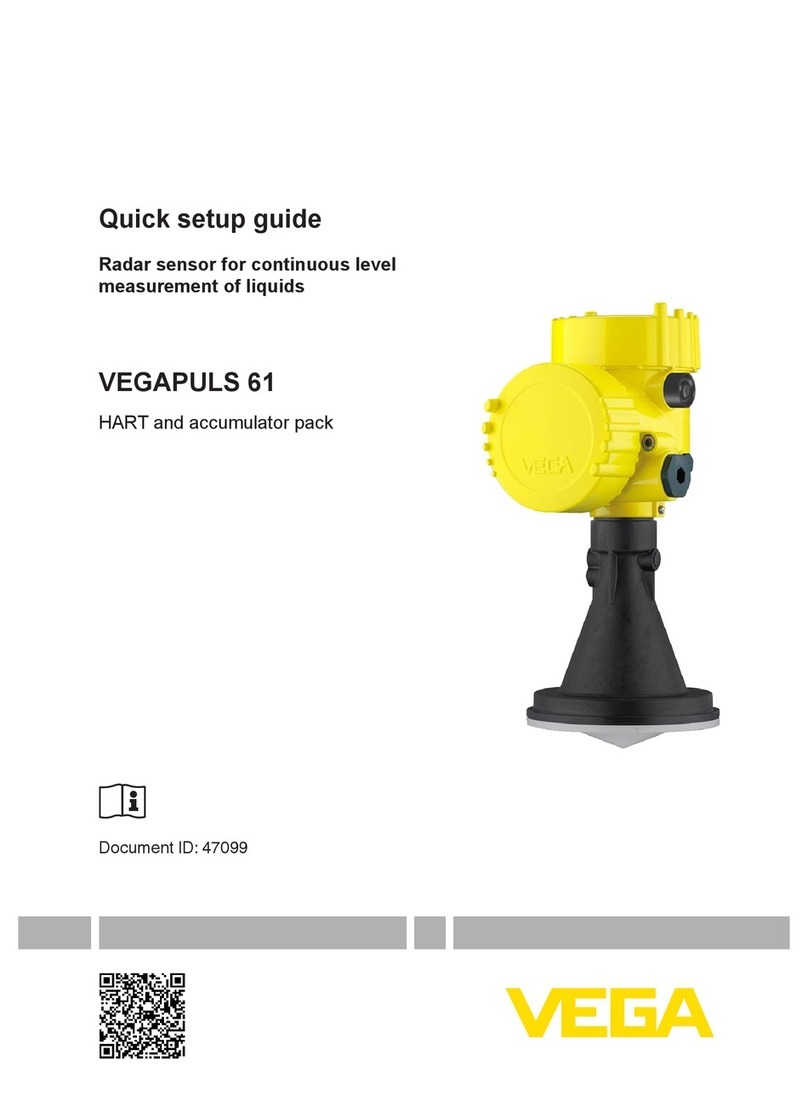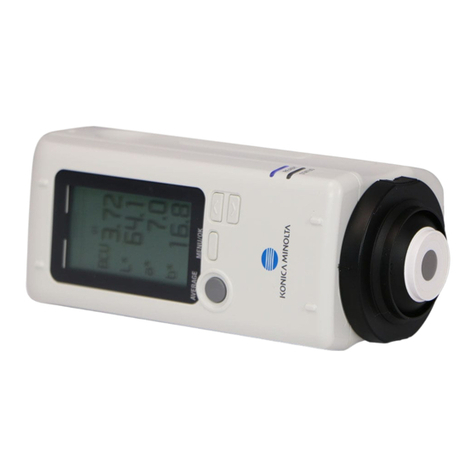
lElectronics with increased sensitivity type PS60FFS.-
The scope of delivery encompasses:
lRadar sensor
lDocumentation
-this operating instructions manual
-Test certificate measuring accuracy,depending on the
instrument VEGAPULS 61 (optional)
-Operating instructions manual 27835 "Indicating and adjust-
ment module PLICSCOM"(optional)
-Supplementary instructions "GSM/GPRS radio module"(op-
tional)
-Supplementary instructions manual "Heating for indicating and
adjustment module"(optional)
-Supplementary instructions manual "Plug connector for con-
tinuously measuring sensors"(optional)
-Ex-specific"Safety instructions"(with Ex versions)
-if necessary,further certificates
3.2Principle of operation
The instrument is suitable for applications in liquids in vessels under
ordinary process conditions.There are application possibilities in
nearly all areas of industry.
The version with encapsulated antenna system is particularly suitable
for level measurement of aggressive liquids in small vessels.
The version with plastic horn antenna is particularly suitable for flow
measurement in open flumes or gauge measurement in bodies of
water.
The standard electronics enables the use of instruments in products
with an ε
r
-Wert ≥1.8.The electronics version with increased sensitivity
enables the use of the instrument also in applications with very poor
reflective properties or products with an ε
r
value ≥1.5.The values that
can be actually reached depend on the measurement conditions,the
antenna system or the standpipe or bypass tube.
The antenna of the radar sensor emits short radar pulses with a
duration of approx.1ns.These pulses are reflected by the product
and received by the antenna as echoes.The running time of the radar
pulses from emission to reception is proportional to the distance and
hence to the level.The determined level is converted into an
appropriate output signal and outputted as measured value.
3.3Packaging,transport and storage
Your instrument was protected by packaging during transport.Its
capacity to handle normal loads during transport is assured by a test
according to DIN EN 24180.
Scope of delivery
Application area
Functional principle
Packaging
8VEGAPULS 61 •Foundation Fieldbus
3Product description
36502-EN-110127
